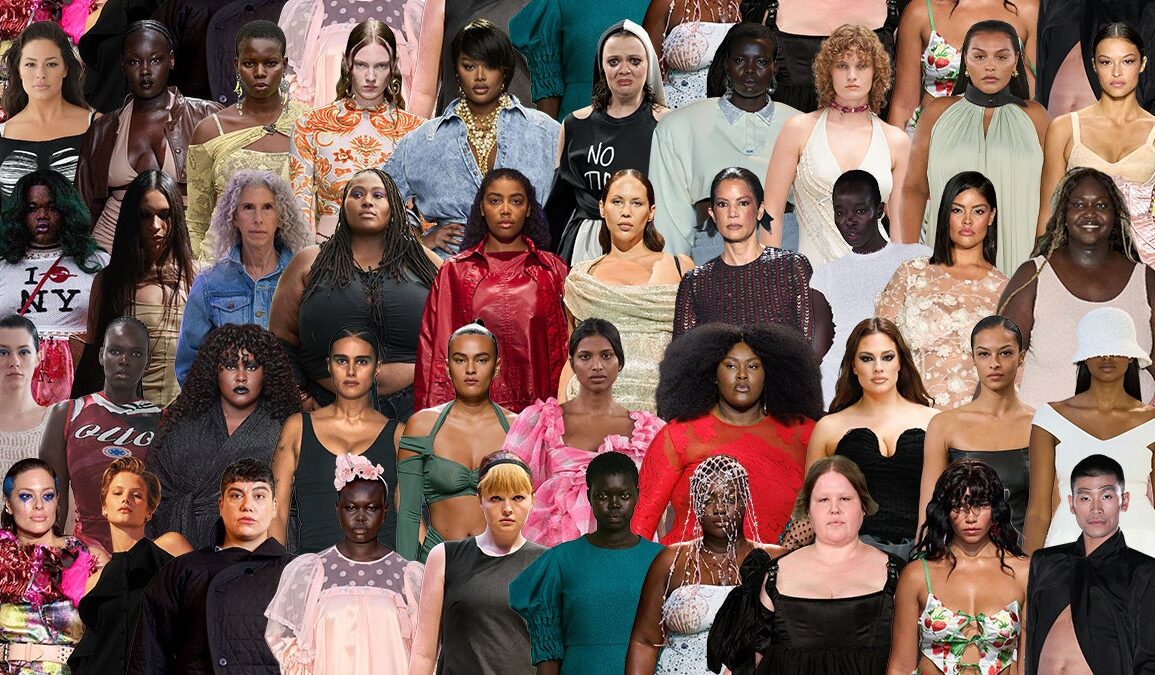
CPHFW also seeks to promote a more healthy beauty and body ideal in the industry in general. “It’s something our brands have been aware of — and actively working with — for many years now and we’ve definitely seen a remarkable improvement over the years,” says CPHFW CEO Cecilie Thorsmark. “Of course one can always do better, but we’ve come a long way this last decade. Today, as part of Copenhagen Fashion Week’s Minimum Standards, which came into effect earlier this year, it’s a requirement to be a signatory of the Danish Ethical Fashion Charter and to comply with its rules and values. We do backstage checks to monitor this and we also advise brands whom we see might need an extra push.”
It works: at CPHFW, out of 503 looks across the 18 CPHFW shows on Vogue Runway, 1.4 per cent were plus-size looks, 15.3 per cent were mid-size and 83.3 per cent were straight-size, which is considerably more size inclusive than any other city.
When asked about size inclusivity, the CFDA declined to comment for this report, instead sharing its Initiative of Health, Safety and Diversity, which goes in depth into protecting the wellbeing of models and providing advice for brands to identify the signs of eating disorders. There’s no mention of size inclusivity in the memo or the initiative’s web page, and the CFDA does not currently provide guidance or quotas improving size inclusivity on the runway. Fédération de la Haute Couture et de la Mode also declined to comment.
The British Fashion Council (BFC) is taking inspiration from Copenhagen, says CEO Caroline Rush. “The efforts made by CPHFW to promote size inclusivity provide an excellent blueprint for us to consider. While we don’t currently have a size inclusivity charter for London Fashion Week schedule designers to sign, the BFC uses its platform to provide brands, including those on our schedule, with information so they can make informed choices,” she says. “Diversity and inclusivity is central to our mission at BFC, and we are in frequent communication with our fashion council counterparts and continue to share our experiences, challenges and best practices so we can collectively accelerate positive change, including a push for size inclusivity, on a global scale.”
Having a set of rules and regulations for brands to adhere to could enact change on an industry level, but is it sustainable, questions model and advocate Asiama. “Forcing something to happen might bring on change quickly, but it might not be as effective. What we want is long-term impact,” she says, pointing to previous trends such as the body positivity movement which failed to create a lasting impact in the industry. “If we just have a bunch of people show up in these spaces to hit diversity quota targets, without having any real care for the community, we’ll see the industry start to regress and support for those communities end once those targets disappear.”
With data analysis by Emily Forkan.
Comments, questions or feedback? Email us at feedback@voguebusiness.com.
The Vogue Business Spring/Summer 2024 menswear size inclusivity report
Karoline Vitto is bringing size inclusivity to Milan. Can it scale?
The Vogue Business Autumn/Winter 2023 size inclusivity report
This post was originally published on this site be sure to check out more of their content.









